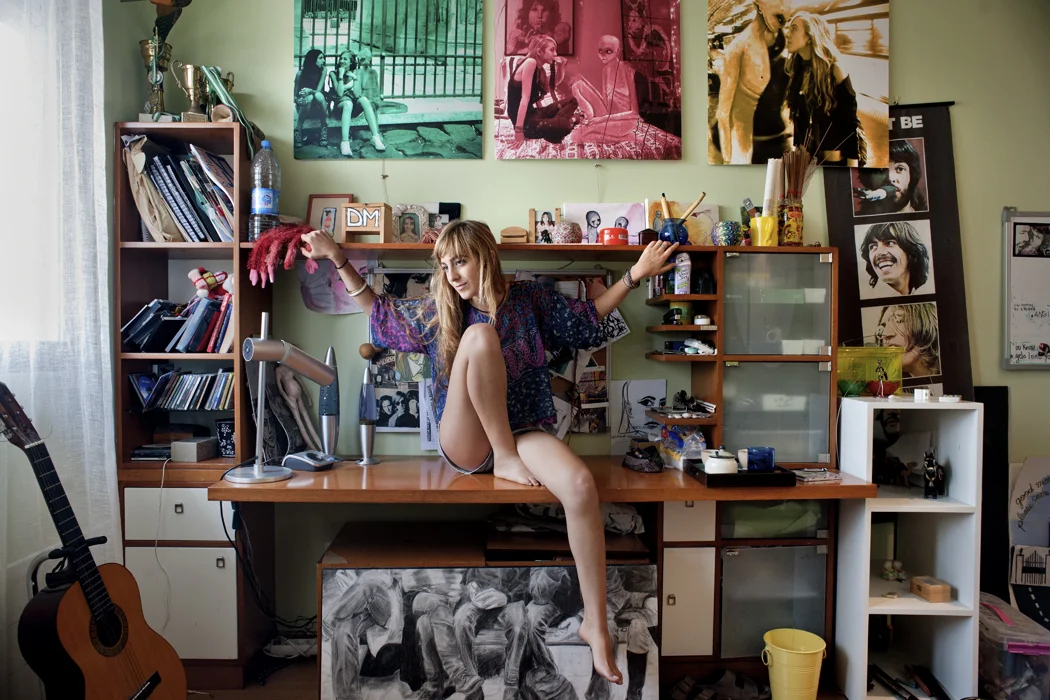In my opinion, identity is the definition of who you are. This can be shown through appearance, behaviour, hobbies and many other factors. Your identity is formed throughout your lifetime and can be affected by upbringing and the person’s specific influences
In photography, the use of colour, clothing and editing can be used in order to represent someone’s personality to the outside world. The setting of the photograph can also allow us to get to know the person’s identity deeper.

Carolle Benitah

Carolle Benitah, born in 1965, is a French visual artist who combines her old family photos with physical editing techniques such as embroidery to reform her own history. The images Benitah edits are from her past family albums, 40 or so years before she brought them back up to learn more about who she was and how she became that person. Carolle Benitah explains that she uses embroidery and other craft techniques in the editing of her images as those activities were seen as “feminine”, as women were expected to learn to embroider and sew in order to comply to the ‘perfect wide’ stereotype. Benitah previously worked in fashion for 10 years before returning to photography in 2001. Her work has been published in magazines such as Leica World, Lens Culture, Shots Magazine and many more. Carolle Benitah’s series ‘Photos-Souvenirs’ was also selected to exhibit in FotoFest’s 2014 Discoveries of the Meeting Place showcase of past Biennial portfolio reviews.
Analysis of Carolle Benitah’s work

This image, named “Pomplondin”, is gently lit using natural lighting. The sunlight may be slightly overcast as the image has a lot of grey, dark tones. The light is coming from behind the people in the photograph as the shadows are cast in front of them. The brightest part of the photograph is the white-washed water flowing in the background.
The thin, red lines embroidered onto the image outline the family in the middle third of the photograph, proving them to be the focal point of the image. The organic, curving lines of water can be seen as leading lines as they direct the viewers eyes from one side of the image to the other, with the placement of the family in the middle.
There is no strong sense of repetition in this photograph, however the ripples in the waves can be seen as a form of echo, as they create a rhythmic pattern.
All the shapes in the image are organic and unorganised. This creates a sense of realism to the photo as the features are not artificially placed and the image is taken more in the spur of the moment, although the family is posing for the photo, there is no precise set up to the image.
There is a strong sense of depth in this photograph as it displays a shallow depth of field. The family, being the focal point, are in focus which contradicts the blurry background. The background can be seen as a somewhat empty space, as there is little detail to objects in this area. The only objects filling this space is the occasional person swimming in the background.
The photograph displays a mainly smooth texture due to the reflections in the water and the smooth flow of the waves. However this is contrasted by the rugged rocks in the background of the image, as the sharp edges juxtapose the gentle waters.
There is a range of tones from dark to light in this image which contradict eachother. For example, the lightest tones in the photograph can be seen in the foamy waves or the clothes of the people, and the darkest areas of the image can be seen in the background and foreground in the rocks and shadows.
In the image itself, there is no use of colour. However this is juxtaposed by the thin, red lines put in place by Benitah to create contrast between colour and monochromatic themes.
There is little arrangement in this photograph as the family in the foreground of the photo are posing for the photographer, however it is not formally arranged for a purpose. The scene seems moderately balanced as the focal point is placed in the middle third with rather equal amounts of background either side. There is no geometrical shaped imposed in the image although the rule of thirds is used.
Examples of Carolle Benitah’s work
https://www.lensculture.com/articles/carolle-benitah-photos-souvenirs



Carolle Benitah inspired photoshoot mindmap


















